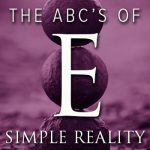Enlightenment no matter how it is defined is found only in P-B. Darkness is the absence of light just as fear is the absence of compassion. Neither fear nor darkness exist except in P-B as part of the illusion, as part of the relative, the metaphoric, the mythic. As Gary Zukov says, “The remedy for an absence is a presence.”[i] Remove all illusion and we uncover our natural state in P-A. Steven Harrison puts it simply, “Enlightenment is a myth because the self is a myth.”[ii]
Harrison continues, “The whole spiritual world is mythic. The historical figures are mythic. The individuals who claim these states are mythic. Myths are powerful communication tools and so they’re very useful in building organizations and the whole material aspect of spiritual teaching.”[iii]
Entering our natural state, P-A, is therefore not a matter of doing anything so much as it is to stop doing that which prevents us from being our True self. If we can stop reacting and start responding, the aforementioned illusions will naturally fall away. Dzogchen Ponlop Rinpoche ends our article with the Buddhist viewpoint on the illusion of enlightenment: “Therefore, in order to find enlightenment, it is not necessary to renounce the world (the outer body) or one’s own body and mind, and leave them behind, as practiced in the Hinayana vehicle, or to seal all appearances with the theoretical view of emptiness, as in the Mahayana. Enlightenment is already right here, within our subtle mind and body, and there is no need to search for liberation outside. We do not have to wait for eons in order to experience a pure Buddha realm. In one moment, we can directly cut through all our clinging and enter the vajira world.”[iv] To accomplish this in the West, because we are not contained in an Eastern paradigm we would do well to have a profound plan. That plan is Simple Reality and the strategies are meditation and The Point of Power Practice. What are you waiting for?
[i] Zukav, Gary. The Seat of the Soul. New York: Simon and Schuster, 1989, p. 71.
[ii] Harrison, Steven. Doing Nothing. New York: Tarcher/Putnam, 1997, p. 26.
[iii] Harrison, Steven. The Question to Life’s Answers. Boulder: Sentient Publications, 2002, p. 74.
[iv] Rinpoche, Dzogchen Ponlop. “What the Buddha Taught.” Shambhala Sun. Boulder, Colorado, May 2006, p. 58.



